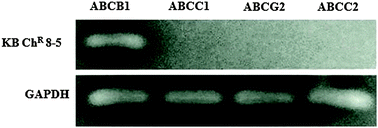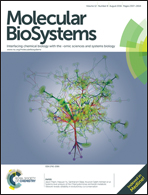Screening dietary flavonoids for the reversal of P-glycoprotein-mediated multidrug resistance in cancer
Abstract
P-Glycoprotein (P-gp) serves as a therapeutic target for the development of inhibitors to overcome multidrug resistance in cancer cells. Although various screening procedures have been practiced so far to develop first three generations of P-gp inhibitors, their toxicity and drug interaction profiles are still a matter of concern. To address the above important problem of developing safe and effective P-gp inhibitors, we have made systematic computational and experimental studies on the interaction of natural phytochemicals with human P-gp. Molecular docking and QSAR studies were carried out for 40 dietary phytochemicals in the drug-binding site of the transmembrane domains (TMDs) of P-gp. Dietary flavonoids exhibit better interactions with homology modeled human P-gp. Based on the computational analysis, selected flavonoids were tested for their inhibitory potential against P-gp transport function in drug resistant cell lines using calcein-AM and rhodamine 123 efflux assays. It has been found that quercetin and rutin were the highly desirable flavonoids for the inhibition of P-gp transport function and they significantly reduced resistance in cytotoxicity assays to paclitaxel in P-gp overexpressing MDR cell lines. Hence, quercetin and rutin may be considered as potential chemosensitizing agents to overcome multidrug resistance in cancer.

- This article is part of the themed collection: Chemical Biology in Molecular BioSystems

 Please wait while we load your content...
Please wait while we load your content...